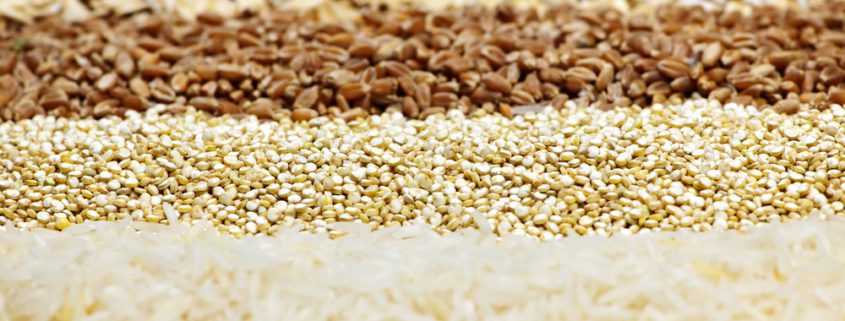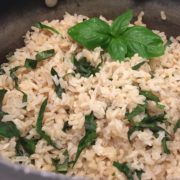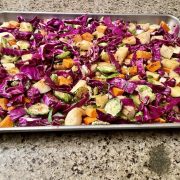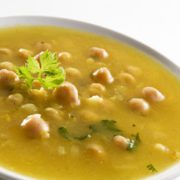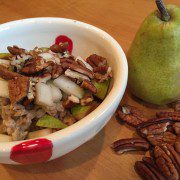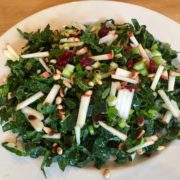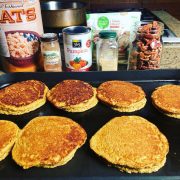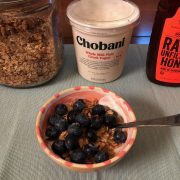Meet the Grains
Move over rice and wheat! Whole-grains from around the world are more available than ever before, an easy way to increase plant foods in our day to day given the diversity and excellent health benefits. Many grains (quinoa, whole-wheat couscous, bulgur) can be cooked in less than half an hour, making homemade dinner possible even in a busy lifestyle.
It’s important to highlight that the health benefits are in WHOLE grains. Refined grains (white rice, white flour etc) have been processed to remove the germ or bran – or both). This significantly decreases the vitamins, minerals, antioxidants and phytonutrients that are critical for optimal health.
[su_expanding_quote_book alignment=”right” source_author=”Margaret Wittenberg” source_title=”The Essential Food Guide” full_quote=”What is a whole grain? A whole grain contains all of the components that are naturally present in the seed of a cereal grass plant, and thus contains all its nutrients. Grains are designed to support the growth of the seed when it sprouts, making them a rich source of nutrition for us too.There are three major components of a whole grain:
- Bran: the outer covering contains the highest concentration of fiber and is also rich in B vitamins, trace minerals and potent antioxidants, including lignans. Its role is to protect the contents of the seed prior to germination
- Germ: the life force of the grain, the part of the seed that sprouts to form a new plant. It contains vitamin E, trace minerals, B vitamins, minerals and protein
- Endosperm: contains starchy carbohydrates, protein and small amounts of vitamins and minerals stored as fuel to nourish the sprouted grain during its early growth
” short_quote=”A whole grain contains all of the components that are naturally present in the seed of a cereal grass plant, and thus contains all its nutrients”]
Whole grains and health
- Whole grains have a combination of fiber, vitamins, minerals and health-promoting phytonutrients shown to help reduce cholesterol, improve intestinal health, stabilize blood sugar levels an decrease the incidence of heart disease and diabetes
- Whole grains processed to preserve most or all major components (bran, germ and endosperm) in their intact form are the most nourishing option. These include grains that are cracked, rolled, and ground
How to get more grains into our daily diet? Have them for breakfast instead of processed cereals. Whole grains provide sustained energy throughout the morning.
- Hot oatmeal, buckwheat and rice cereals for breakfast in cold weather.
- Overnight oats, and granola topped with fresh seasonal fruits and sprinkled with nuts
- Baked oatmeal, whole-grain muffins and breakfast breads for make-ahead breakfasts
- Granola bars, baked oatmeal bites, overnight oats in a mason jar or breakfast cookies for breakfast-to-go
For dinner or lunch top cooked grains with roasted (or sauteed) vegetables or mix with beans and pesto, make pilafs and risottos, put grains in soups or salads tossed with greens and beans.
My pantry staples are oats, brown rice (brown rice is good source of fiber, vitamin and trace minerals. White rice loses the bran and germ –and most of its nutrition) and quinoa. Then I vary my menu plan and shopping list with barley, or buckwheat, or bulgur, or whole-wheat couscous.
The grains I use most:
- Barley: has a from of soluble fiber (beta-glucans) that mixes with liquid in the digestive tract and binds fatty substances to remove them from the body, helping reduce cholesterol. Soluble fiber also helps slow the release of sugars into the bloodstream, providing steady, sustained fuel for the body
- Buckwheat: Not wheat nor even a grain, this is a plant seed that’s almost a complete protein because it contains all essential amino acids. It contains fair amounts of calcium, iron and B vitamins. It makes a great granola and overnight cereal; I also use it in soups and pilafs mixed with other grains
- Bulgur is made by cracking wheat berries that were first parboiled and dried. Use for pilafs mixed with other grains and for tabbouleh. It’s great for when I’m in a hurry for dinner or breakfast (mix it with fresh juice, topped with nuts, or with pureed fruits)
- Couscous is actually a pasta of durum wheat flour sprinkled with flour and rolled into small pellets. It can be prepared in a matter of minutes. It’s tasty cooked with fruit juice, aromatic spiced (cinnamon, cardamom etc), mixed with dried fruits (apricots, date, raisins) and nuts and pressed like polenta for breakfast to go. Or tossed in a salad with greens
- Oats: Because the bran and germ are intact, all forms of oats are considered whole grain, and have extensive nutritional benefits including soluble fiber (beta-glucan) that helps lower cholesterol, and stabilizes blood sugar. Oats contain an essential fatty acid (linoleic acid)) that helps regulate vital body functions including supporting a nervous system and healthy skin.
- Quinoa, my absolute favorite, is actually a seed and a complete protein, containing all essential amino acids. It’s also a good source of iron, magnesium, calcium, vitamins A and E. Who says it’s only for dinner? Mix last night’s leftover quinoa with applesauce and chopped walnuts for a satisfying breakfast!
Other grains to try are farro (is an ancient type of wheat with a chewy texture rich in fiber, magnesium and vitamins), millet (a good source of iron, rich in lysine making it higher-quality protein than most grains) and wheat berries (the whole complete wheat grain).
New to whole grains? Check out:
100 Days of Real Food:Understanding Grains
100 Days of Real Food: 6 Ways to Ease the Switch to Whole Grains
The Whole Grains Council: Identifying Whole Grain Products

